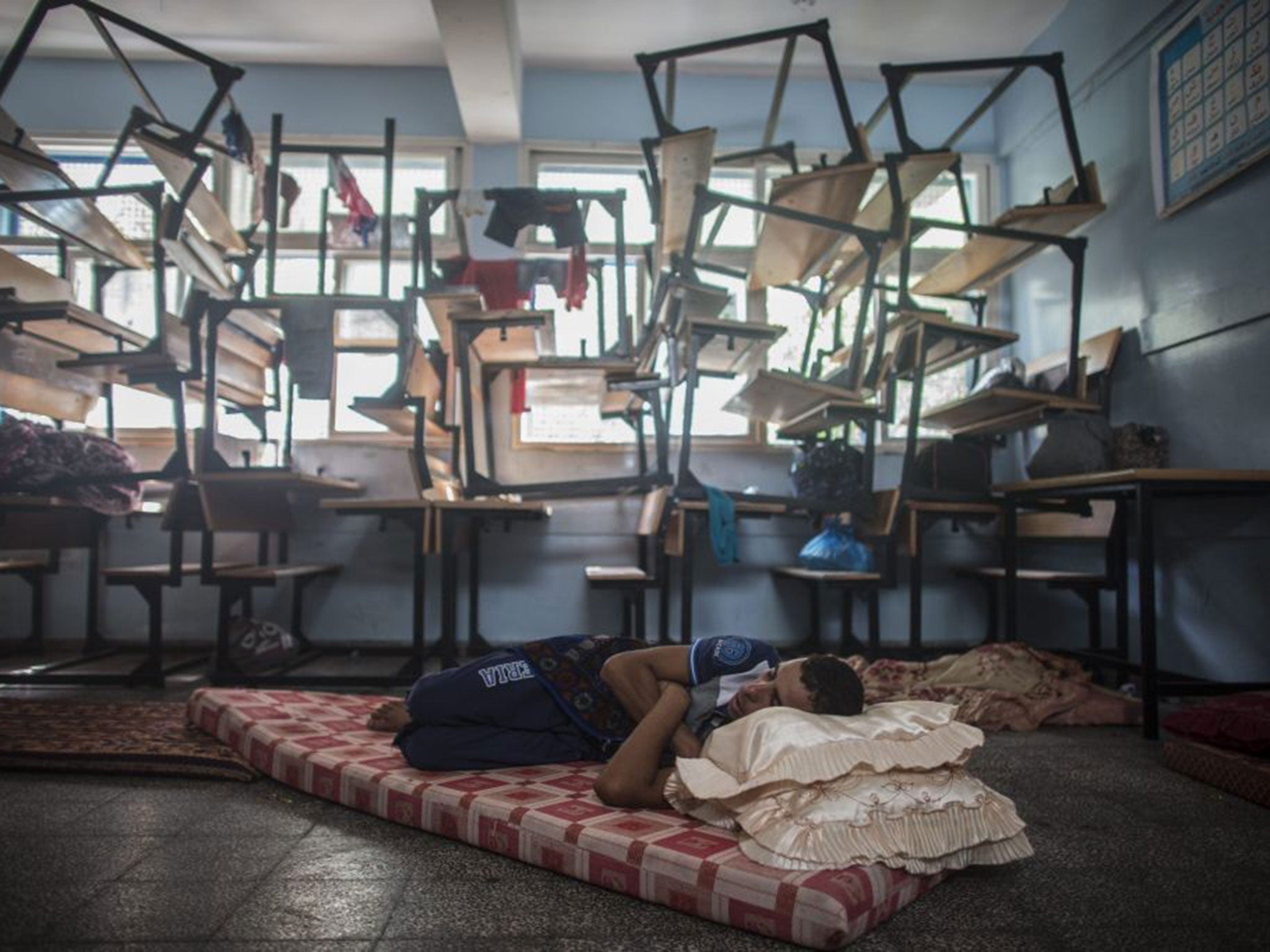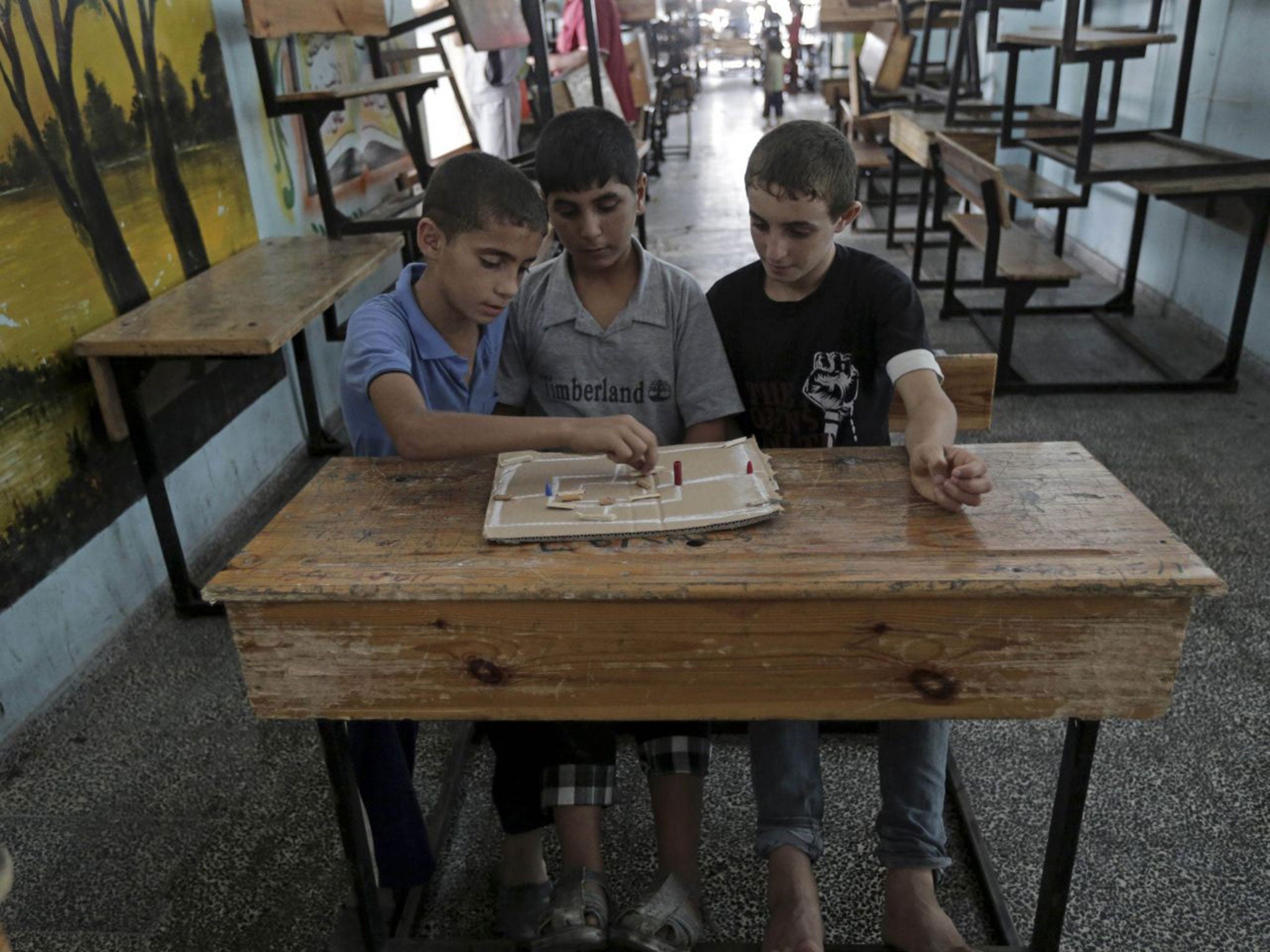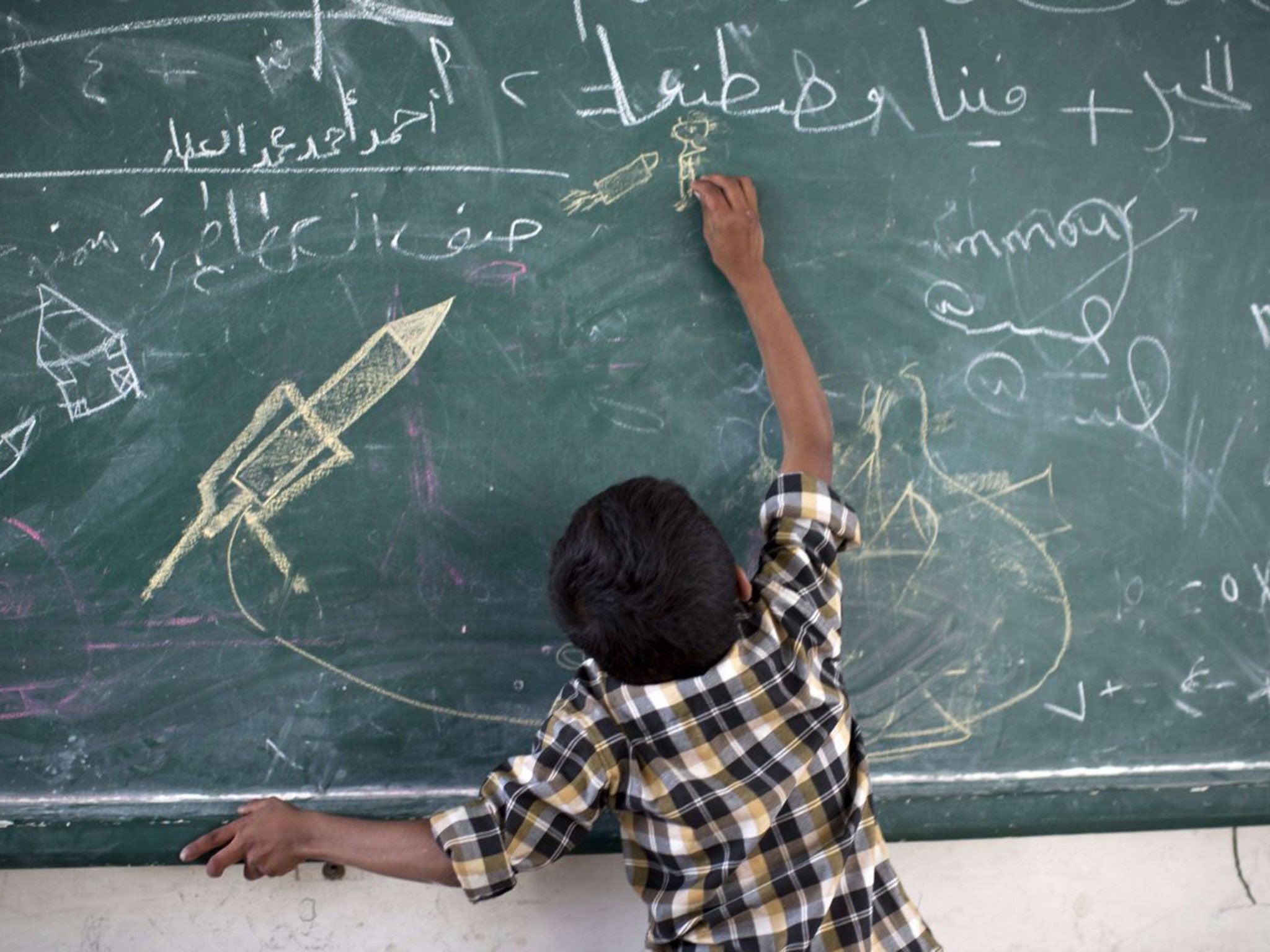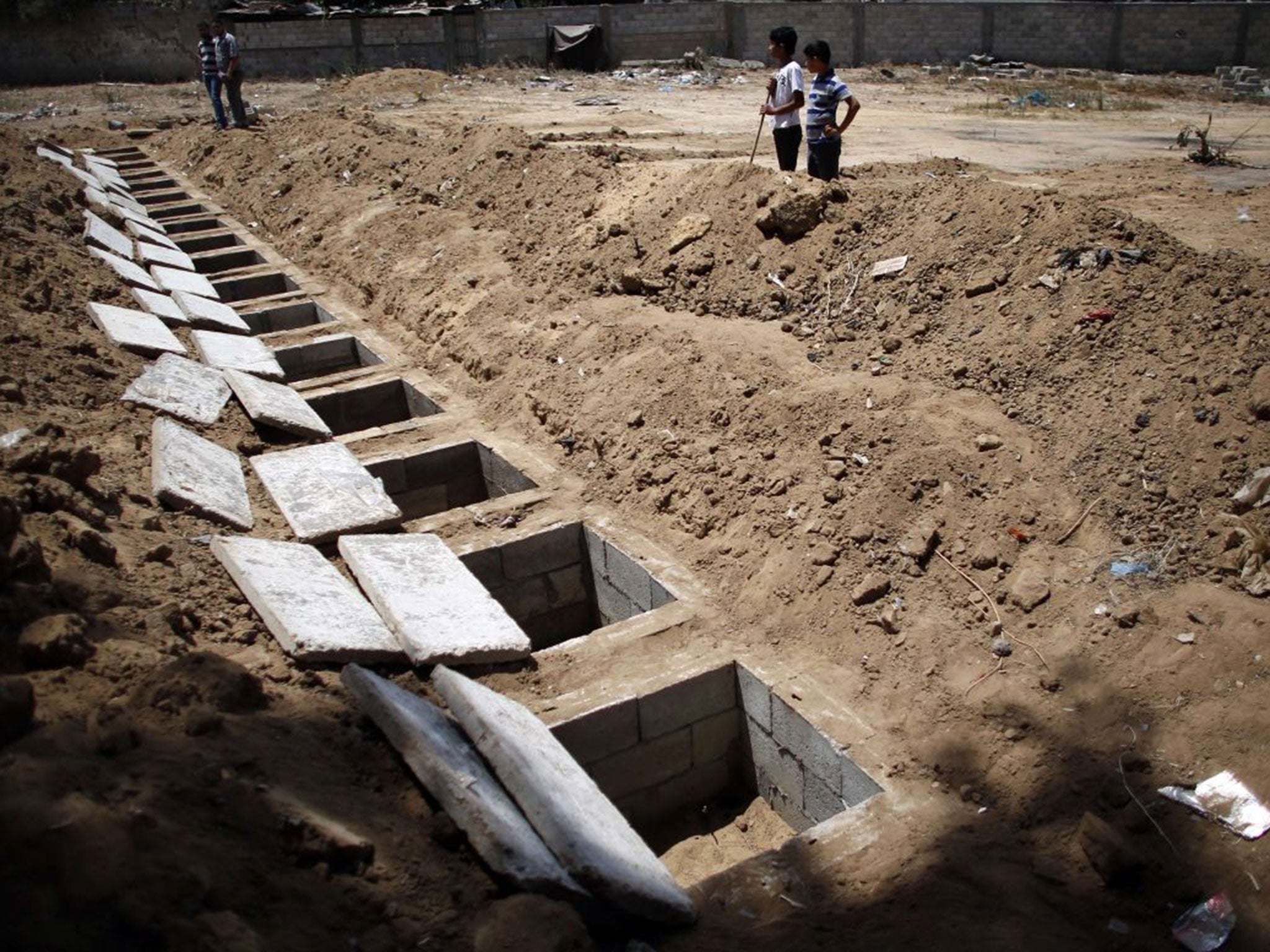Israel-Gaza conflict: Human cost of Israel’s onslaught on Gaza towns continues to rise
The vicious strife in Gaza escalates, but, with no move towards a ceasefire from Israel and Hamas

Your support helps us to tell the story
From reproductive rights to climate change to Big Tech, The Independent is on the ground when the story is developing. Whether it's investigating the financials of Elon Musk's pro-Trump PAC or producing our latest documentary, 'The A Word', which shines a light on the American women fighting for reproductive rights, we know how important it is to parse out the facts from the messaging.
At such a critical moment in US history, we need reporters on the ground. Your donation allows us to keep sending journalists to speak to both sides of the story.
The Independent is trusted by Americans across the entire political spectrum. And unlike many other quality news outlets, we choose not to lock Americans out of our reporting and analysis with paywalls. We believe quality journalism should be available to everyone, paid for by those who can afford it.
Your support makes all the difference.Hours of pounding strikes from air and sea, the first clashes on land, and an exodus of residents from their homes fearful of even more bloodletting to come. The vicious strife in Gaza continued to escalate, with an accompanying rising lethal toll. But, with no move towards a ceasefire from Israel and Hamas.
The human cost of what is taking place was all too evident today: 17 graves at a cemetery in Tuffah, for dead ranging in age from 18 months to 60 years. They were all from one family, that of Taysir al-Batsh, the police chief, who was the intended target; he is expected to recover after surgery. Another family, the Zaurabs, were burying five of their own at Rafah. Fifty-four were killed in the course of the day, the total at the end, numbered 168, with 1,120 injured, according to Palestinian medical officials. The United Nations say that 77 per cent of those killed were civilians.
The expectation is of many more casualties to come. On Saturday evening and Sunday morning, the Israeli military had warned residents to leave the northern region by midday. It was the signal for families to move out, by cars, vans, foot and horse drawn carriages. At the same time, a more organised evacuation was taking place, of around 800 with dual, mainly Western, nationalities, through Erez crossing, into Israel, escorted by diplomatic staff.
In the early hours of the morning, Israeli forces had carried out their first firefights inside Gaza with naval commandos sent to destroy rocket launchers. It came hours after Hamas had started launching ‘J-80 missiles’ into Israel after declaring that it was going to attack Tel Aviv. The city was not hit, but two hit Bethlehem and Hebron.
Hamas claimed that its forces had detected and prevented the commando raid from landing at Al-Sudaniya. The Israeli ministry of defence stated that four of its troops suffered light injuries in the mission which was “accomplished”.
Witnesses spoke of prolonged shelling and automatic rifle fire. Ayman al-Nasri, a local resident, said: “There were bursts of shooting followed by other firing on the ground. Then there was firing from the air, we thought it was Apaches [helicopter-gunships] and that was a frightening noise. We tried to get a closer look, but then had to run as the firing got near us. There was fighting for more than an hour and a half.”
In the morning residents at a number of locations began to get messages from the Israeli military, by telephone calls, texts and leaflets, to leave. One of the pieces of paper, dropped from the air by aurcraft, stated: “Be careful and follow our instructions: those who do not will be risking their lives and lives of their families.”
Mohammed Al-Attar answered his mobile on Saturday evening to hear an order, in Arabic, for him and his family to leave their home in Al-Atrata. “He said we must leave by 12 o’clock on Sunday because they were going to invade. We left at 3 o’clock in the morning. I put my wife and sons in the car and walked here, I walked for four kilometers. Everyone has left Al-Atrata, there must be at least 400 people there. On the way I met lots of people from other areas, it looked like everyone was leaving.”
The current Operation Protective Edge, by Israel, was the third time the family had been forced to move following such warnings. They had also fled during two previous incursions into Gaza, Pillar of Defence, in 2012 and Cast Lead, three years earlier. Now they were among the hundreds staying at a school, the New Gaza Elementary Boys Prep, run by the UN, in Gaza City.

“Both the times in the past, the Israelis went into our home, they did a lot of damage, cutting mattresses and sofas with knives, writing things on the walls, and doing dirty things on the floor. But it was really bad in Al-Atrata in the last few days, with the bombing, we were very scared. We hope it is going to be safer here”, said 60 year old Mr Al-Attar.
But Gaza City continued to be subjected to attacks with naval guns, offshore, opening up in the afternoon. Namaa al-Batsh could hear the booms sitting on her bed at Shifra Hospital, her arm encased in a bandage, as she spoke about losing five of her grandsons and a great granddaughter in the Tuffah attack. “Qusai, he was just nine years old. Anas, he was seven, Mohammed was16, Yahya was 18.” Her voice faltered when it came to 21 year old Samar, who was pregnant, and who had died with her 18-month-old daughter Amal.
Taysir al-Batsh, the police chief, was injured as he left a nearby mosque in an air strike on late Saturday afternoon. A second missile demolished a home in the compound of the extended family. Mrs al-Batsh was staying in an adjoining house which suffered extensive damage in the blast.

“I had just finished praying when there was this loud explosion, everything went dark, there was so much smoke and dust, I then must have become unconscious”, she said. “I did not know about what happened until I woke up in the hospital, when I heard I wished I had never woken up.
“My grandchildren were in that house to visit their cousins, this is Ramadan, a time to be with families. The first house [in the compound] was built by my husband 50 years ago, they were not damaged in any of the attacks before by the Israelis. There had been no warning, the Israelis did not give anyone any time to leave, they must have known a lot of people live in these houses, why did they keep bombing this place for so many days?”

What about Hamas firing missiles into Israel? I asked Yusuf, one of Mrs al-Barsh’s distant cousins. “That is in self-defence” he insisted, “and anyway the Israelis are always saying they can never do any damage because of their Iron Dome.” But what about the fear and trauma caused to civilians across the border from the constant fear of missiles? “What do the Israelis know about fear, it is they who cause fear in others, they have kept us Palestinians in fear for the last 70 years.”
Join our commenting forum
Join thought-provoking conversations, follow other Independent readers and see their replies
Comments